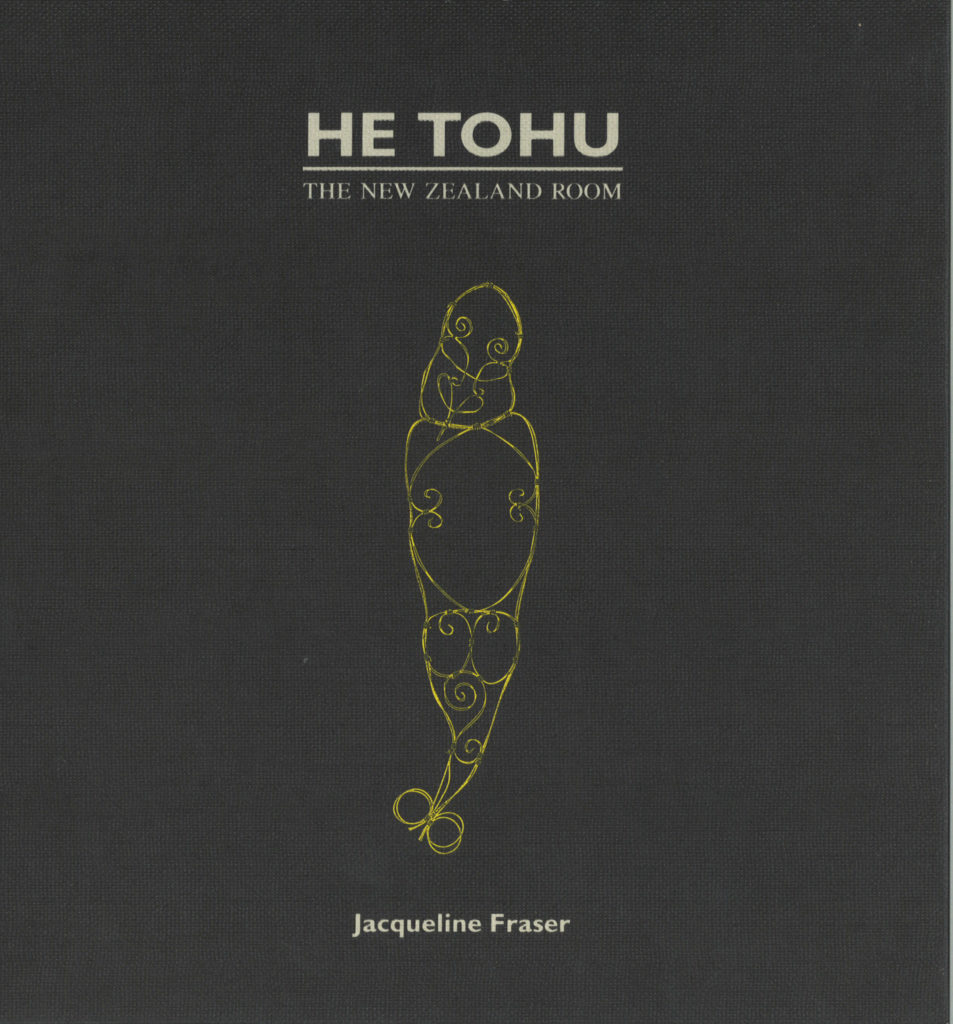PUBLICATION essays Jacquie Baxter, Gregory Burke, Paul Walker
1993 is the centennial of women’s suffrage in New Zealand. City Gallery reopens in its new building—the old Wellington Public Library in Civic Square—with four exhibitions showcasing women artists: Alter/Image, Rosemarie Trockel, Te Whare Puanga, and Jacqueline Fraser’s project He Tohu: The New Zealand Room.
Fraser’s work honours the former life of the gallery space in which it’s presented. When it was the Library’s New Zealand Room, it housed the Library's New Zealand Collection, and, from the 1940s to the 1980s, hosted exhibitions by contemporary New Zealand artists.
Throughout her work, Fraser often arranges flimsy materials—often associated with domesticity and femininity—into totemic power forms. He Tohu traces the lines of a Māori whare whakairo (carved meeting house) using materials sourced from haberdashery and hardware stores: plastic tape, wire, braid, ribbon, lace. It incorporates woven wire figures that recall the forms and subjects of Māori carving. Fraser wanted to create something at once modern and of the past, describing it as ‘an imaginative, not a traditional work’.
In the catalogue, architecture historian Paul Walker observes that He Tohu approximates architecture, but lacks architectural structure, acting more like architectural ornament. Indeed, this ornamental quality highlights the absence of structure. He Tohu involves a play of presence and absence, permanence and temporality. Fraser describes it as a ‘ghost house based on the far away past’.
On the outside of the City Gallery building, Fraser hangs wire figures of Ngake and Whātaitai, taniwha who formed the Wellington Harbour.
He Tohu is Fraser’s first major show since returning to New Zealand after her 1992 Moët et Chandon Fellowship in France. Perhaps her interest in the ornamented architecture of the whare whakairo was fostered by seeing ornamented historical European buildings while away.





